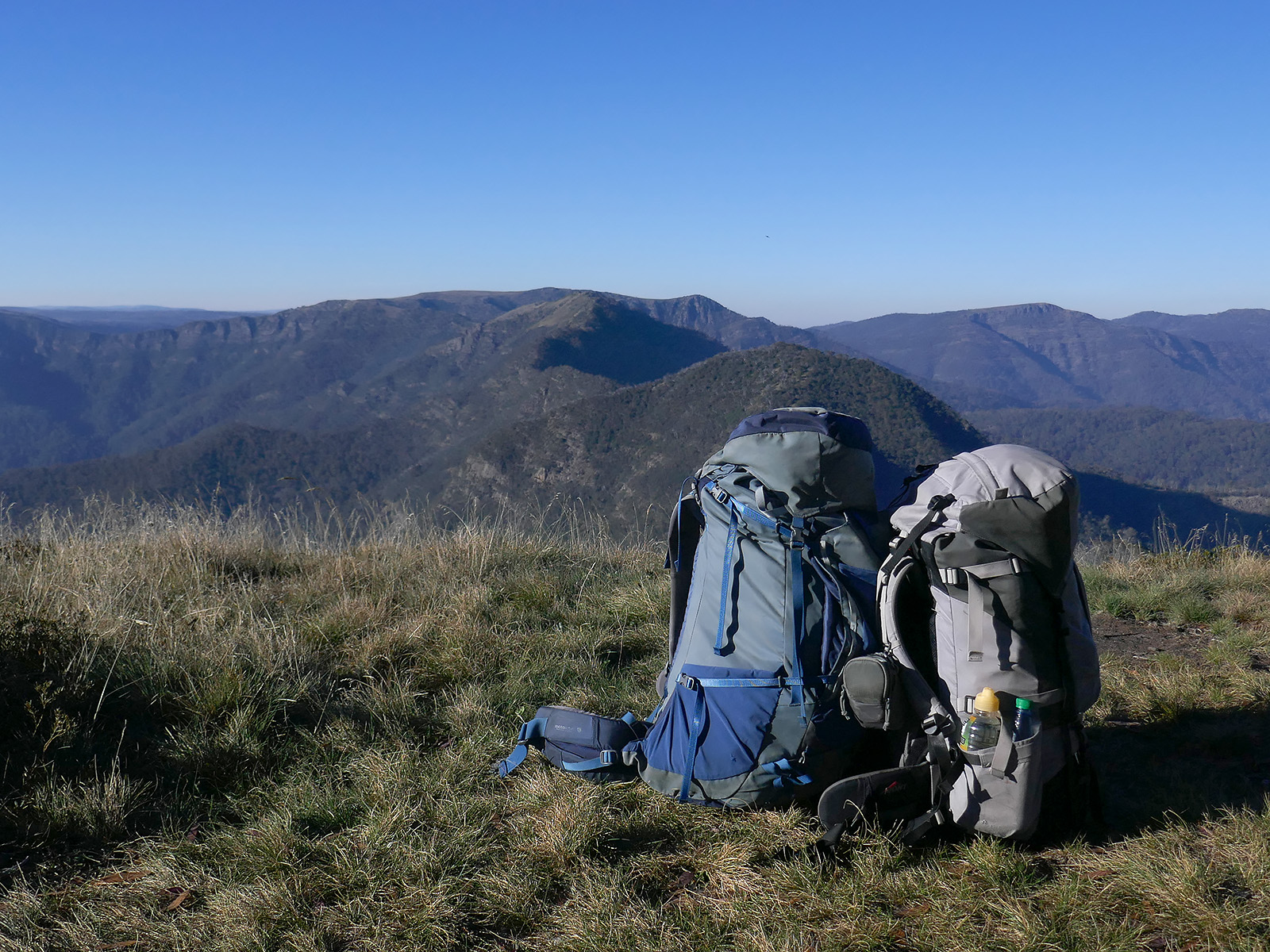Reading Time: 4 minutes
Don’t rush into buying that very expensive pack. There are many brands and models available to suit trips in a variety of environments and of varying duration. A pack suitable for a weekend may be too small for extended or winter trips.
Look at several different models in specialist gear shops. Try them on when loaded and correctly adjusted. A good idea before purchasing a pack is to hire or borrow one to try it out. A loaded pack must feel comfortable to carry.
Beware of packs with too many ‘features’, e.g. compartments, pockets, attachment points and zippers. These can be harder to pack and balance a load, have more points of potential failure or leakage and such features also add weight. They can also make it more difficult to remember where something is packed.
There are plenty of cheap packs around that won’t last the distance, will leak and fail. Selecting a good quality pack with a simpler design is often the best decision.
Type of packs
Types of packs include:
- Day packs (with or without hydration bladder) typically 10-30 litres
- Overnight packs (with or without hydration bladder) 30-60 litres
- Packs for extended trips 60-80 litres
- Packs for alpine use – with fitments for snow shovels, skis etc.
Fit and comfort
- Packs come in different back lengths and have some adjustment within each length option. Be sure to select the correct length for best fit.
- Hip belt designs vary and it is important that it fits comfortably as much of the load is carried on the hips.
- Good outdoors shops will have a means to fill the pack so that it can be tried on for fit and comfort with a typical load.
- Compression straps reduce volume of a pack that’s not full to prevent load shift and keep weight closer to the back.
- Some brands make specific ‘women’s fit’ pack styles and sizes.
- Many packs provide airflow and ventilation on the user’s back by using a tensioned mesh, while others have air flow channels that reduce the pack surface area on the back. Packs that sit flat on the back stop air flow and can cause excessive sweating.
Capacity
- Pack volume is measured in litres and is often indicated in a pack’s name – there may be some variation in this measure between brands.
- At least 40lt is popular for overnight trips.
- 80lt is a popular size for extended trips.
- The pack must be large enough to carry all gear and food inside. Items lashed or dangling on the outside is a recipe for damage and loss of gear.
- Some pack designs allow attachment of additional pockets to expand capacity.
Durability
- Ultralight packs are not as hard wearing and some are not as comfortable.
- Preferably the pack material should be waterproof, e.g. coated Cordura, canvas.
- Straps and zippers are most prone to wear and tear. Ensure zippers are the heavy duty type.
- Look for double stitching at stress points and buckles that are robust.
Other features
- Front pockets with a zip or buckle are useful for items that need easy access e.g. water bottle, nibbles, hat, gloves.
- Elasticised front pockets without zips are suitable for flatter items such as a rain jacket.
- Side pockets are sleeves or elasticised pouches that are useful for storing other items.
- Removable side pockets – some packs have provision for attaching additional pockets. Note that adding to the width of a pack can make it difficult to use in scrub and when skiing.
- Top lid pocket is useful storage for quick-access items e.g. sunscreen, torch, camera, etc. Some top lid pockets are detachable and convert into a hip belt pack for short trips.
- Map pocket. Some packs have a flat pocket useful for maps under the top lid.
Hip belt pockets can accommodate tiny items e.g. snacks, keys, etc. - Zipper entry on some packs make it possible to access items in the lower part of the pack without digging up the entire pack from the top, or provide entry directly to the centre of the pack, but they are a point of weakness and entry for water.
- Throat – an extension of lighter material that provides closure to the main compartment and helps to keep water out of the pack.
- Hydration sleeves are an internal sleeve to accommodate a hydration reservoir and have hose portals for the sip tube.
- Attachment points hold items that cannot be packed inside e.g. ice axe, trekking poles.
- Specialist alpine packs may also include a tool pocket for items including a snow shovel, avalanche probe, etc.
Pack liners
- Pack liners with a draw cord or roll top seal are used to keep gear dry inside the pack.
- They must be wider and longer than the pack to avoid wasting pack capacity.
- Large plastic garbage bags, homemade silnylon or ready-made liners are all suitable.
Pack covers
A good pack cover:
- Is invaluable in keeping the pack and contents drier if walking in long periods of rain.
- Needs to be large enough to cover the whole pack.
- Must attach securely, particularly in strong wind or scrub to avoid being blown or pulled off.
Limitations:
- Pack covers are made from lightweight material that can easily snag and rip in scrub.
- Makes accessing gear in the pack harder.
- Some covers that are integrated with the pack are of poorer quality.
Packing for overnight trips
- Put bulky and lighter items that are not needed during the day down the bottom, e.g. sleeping bag, liner.
- Pack heavier items close to the back (e.g. food, stove, fuel)
- Put items that need to be accessed easily during the day towards the top of the pack or in pockets (e.g. water bottle, snacks, warm jacket, rain jacket, first aid kit.)

